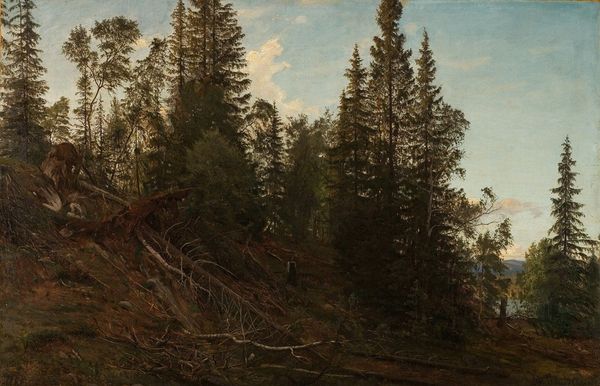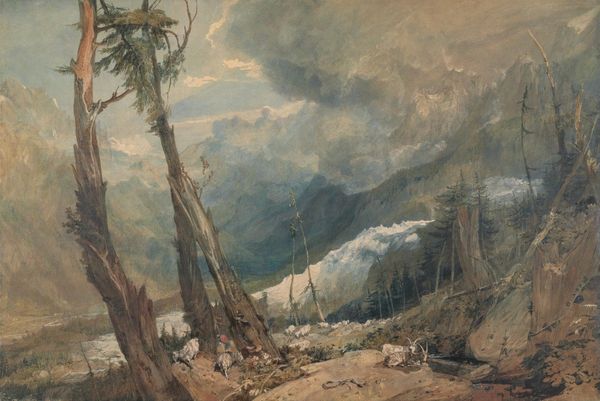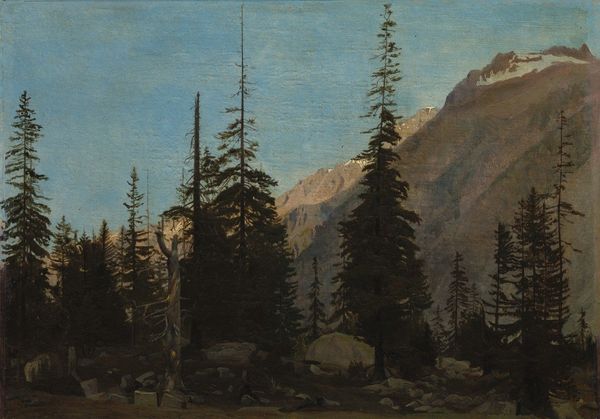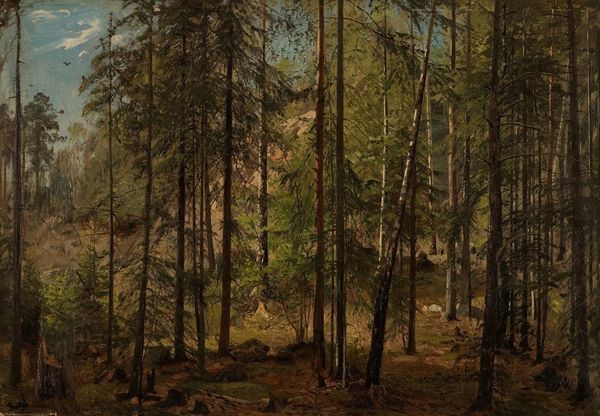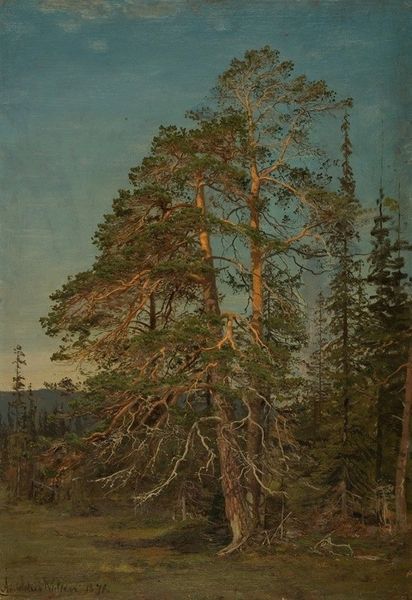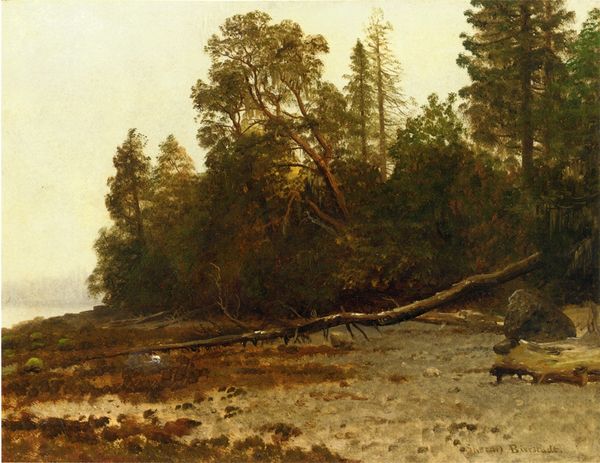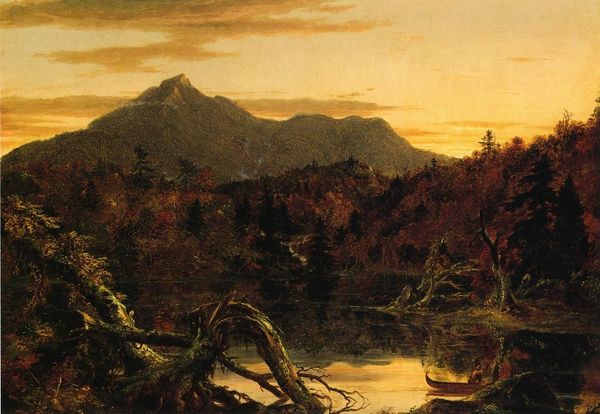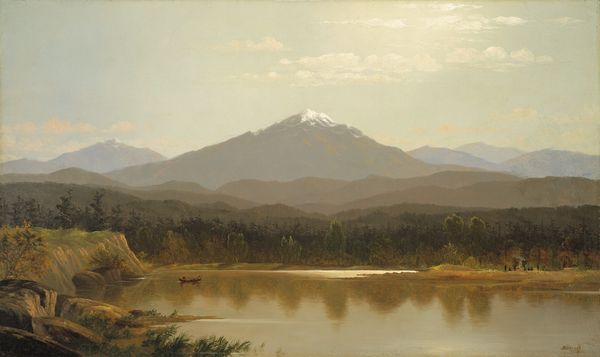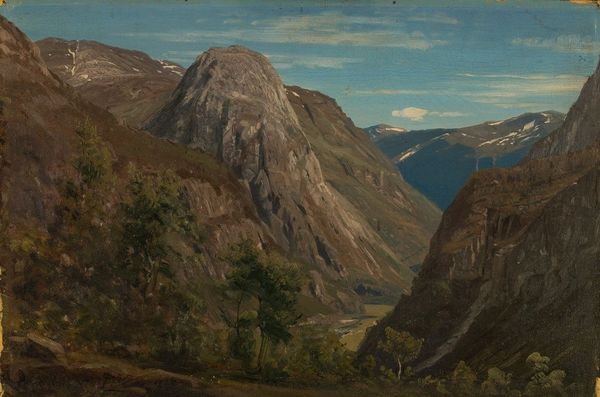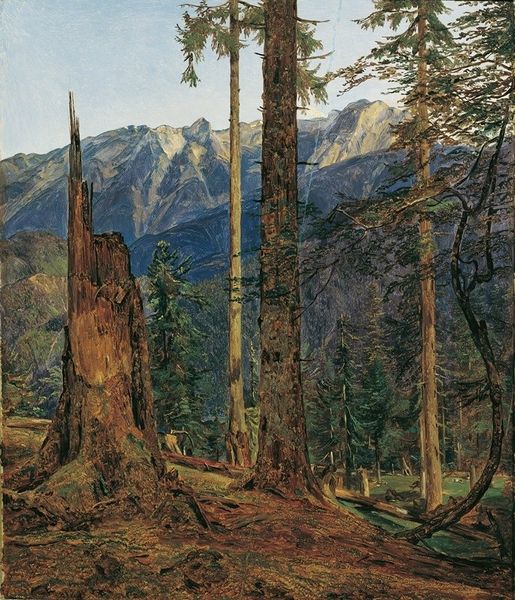
Copyright: Public Domain: Artvee
Editor: Here we have Amaldus Nielsen’s "Øverst i Setesdal" from 1864, rendered in oil paint in a plein-air style. The scene evokes a sense of melancholy with its muted colors and somewhat desolate landscape. What deeper meanings or contexts can we draw from this piece? Curator: Looking at this work, I immediately think about the rise of Norwegian national romanticism in the 19th century, a period when artists sought to define and celebrate Norwegian identity. The landscape here becomes a stage upon which narratives of belonging, cultural identity, and even resistance play out. Editor: Resistance? How so? Curator: Well, consider the historical context. Norway was under Swedish rule at this time. Artists like Nielsen sought to depict the ‘true’ Norway, rooted in its land and its people, consciously distinct from Swedish cultural dominance. This act of visually reclaiming the land could be seen as a form of cultural resistance. Notice how the painting privileges the wild, untamed aspects of the landscape over symbols of urbanity or imposed order. Do you see this reflected in other artworks from this time period? Editor: That's a perspective I hadn't considered! Now, I can’t help but see how even the choice of the specific location, “Øverst i Setesdal”, might signal a deliberate claiming of a space deemed particularly Norwegian and culturally significant. Curator: Precisely. Landscape isn't just about scenery. It’s about power, identity, and the stories we tell ourselves about who we are. What new questions arise for you now when viewing similar art pieces? Editor: This reframes my entire understanding. It's fascinating how art becomes a tool to navigate cultural and political landscapes, so to speak. I will now ask much more about location and context!
Comments
No comments
Be the first to comment and join the conversation on the ultimate creative platform.
